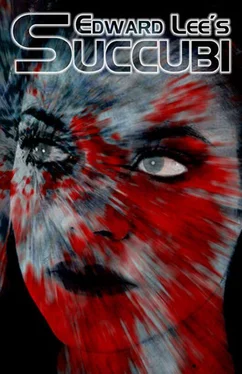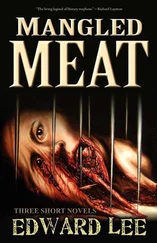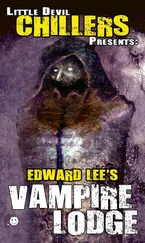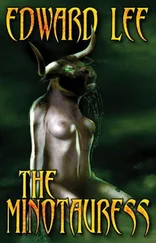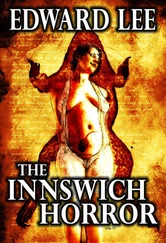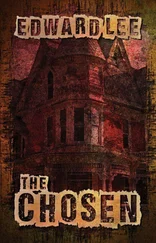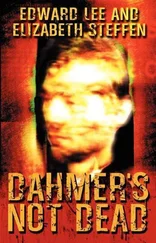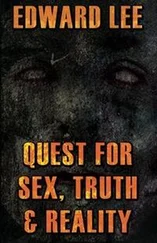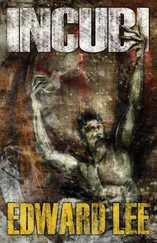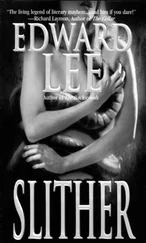“Or the Ardat-Lil,” Dr. Harold supposed.
“No, not quite. The Daughter was so beautiful that Lucifer, notorious for his hormones, couldn’t resist. She was beautiful, but she wasn’t evil, and Lucifer wanted an evil little girl. So he changed himself into an anonymous man, whom the Daughter fell in love with. It was all a ploy. The Daughter married the man, had intercourse with him, and then she became pregnant. In other words—”
“Lucifer seduced his own daughter.”
“Exactly,” Professor Fredrick said. “The Daughter then gave birth to an even more beautiful baby girl, and she turned out to be heinously evil. She was known as the Daughter of the Daughter, or the Ardat-Lil. That’s what this repeated term in Tharp’s sketches refers to.” Professor Fredrick pointed to one.
Dr. Harold read, beneath a drawing of a woman giving birth on a dolmen, the words Dother fo Dother.
“The dohtor, or in the Chilternese form, the Dother fo Dother, was half human, half devil, the worst of both parts, and she was therefore condemned by God to eternity in hell. However, like many demons, she was born with the power of incarnation, and it is the bounden duty of all demons to perpetuate evil. Through time, the Ardat-Lil gained followers on earth, human followers, who were granted sub carnate powers in return for their worship. A coven formed—”
“The Ur-locs,” Dr. Harold conjectured.
“Right, whose existence revolved solely around the worship of the Ardat-Lil. They served her in many ways, by ritual, by sacrifice and cannibalism, and by eliminating all men from the bloodline, or bludcynn—another word which Tharp refers to quite frequently. The Ur-locs, according to legend, turned men into slaves via something called the sexespelle; it has always been thought that intercourse with a succubus functioned as a pact with the devil. All coven members—wifhands—had the power to become succubi for short periods, during which they seduced men and hence enslaved them. They’d trick men into thinking they were dreaming, have intercourse with them, and that was that. Any man who had sex with a wifhand in the succubi state was lost forever to the coven’s will.”
“What are these words here?” Dr. Harold asked, pointing to further sketch pages. “Are they all relative to this system of worship?”
“Oh, yes,” Professor Fredrick answered. “Ælmesse, alms; lof, praise in ceremony; cirice, church. Thane, helot, and peow all mean the same as wreccan: male slave—one who has fallen to the succubi. Wîhan means to make holy. The Ur-locs believed that the only way to make a man holy was to kill him—and often eat him— in homage to the Dother fo Dother.”
“And these? Wifford? Wifmunuc?”
“A wifford to the Ur-locs was their version of a verger or a seminarian, a religious hierarch. The wifford was second-in-command of the coven, and in constant training to replace the coven leader upon her death. The leader was called the wifmunuc, the one closest to the deity.”
Dr. Harold grimly stroked his white mustache. He considered this, and what the old professor had said earlier. What a ghastly vision…
“Not a pretty topic, I assure you. Despite their obscurity, the Ur-locs proved one of the most savage societies to ever exist.” Professor Fredrick then emptied the smoking guts of his pipe, tap-tap-tapping them into an obsidian ashtray that once served as an Assyrian blood tap. “There’s a summation, though, in an ultimate respect, I mean.”
“I’m sorry?” Dr. Harold said.
“There’s a point to all of this. I don’t believe for a minute that an Ur-loc cult could actually have survived all this time, nor do I believe in the occult. However, I do have an observation to make, which you should find exceedingly uncanny.” Fredrick released a roughened chuckle. “Would you like to hear it?”
The dying pipe smoke sifted up. From the bookshelves, and from odd perches all about the office, the stone likenesses of demons persisted in their frozen stares. And splayed across the desk lay Tharp’s drawing of the Ardat-Lil, shimmering in its obscene beauty…
“Yes,” Dr. Harold said. “I’d like to hear it very much.”
—
Chapter 29
Ann fled down the hall, then slowed. Then she stopped. What was she thinking? Her father was dead. With his own blood he’d written a warning. But what did that really mean? Ann stood still in the paneled hall, blinking.
He’d suffered a massive stroke. He was delirious. He didn’t know what he was doing.
There.
She let reality catch up to her. As usual, no one was in the house. What do I do now? It was a good question. What do you do when someone dies? Call an ambulance? A funeral home? Mustn’t a doctor declare him dead first? Ann felt disconnected. It was her father who lay dead in the next room, not some stranger. Oddly, even guiltily, she felt relief.
His torment’s over, she realized. This was a good thing. What must it have been like for him, immobile and brain-damaged? In death, her father had found the peace that his illness had robbed him of. Now Ann understood why people always said “It’s a blessing” at funerals. Her father’s death was a blessing.
The acknowledgment made her feel better. She went downstairs and sat on the bottom step, chin in hand. The total lack of sound made the house seem even more empty. How would Melanie take her grandfather’s death? And what would her mother say? But in a moment Ann realized she was reaching for distractions. Above all, what continued to gnaw at her was the same thing that had been gnawing at her for months.
The nightmare.
Pieces of the nightmare kept sifting in her head, and that terrible scarlet vertigo. How could anything be so obsessive? Her own father had just died, yet the preoccupation with the dream remained. Slup-slup-slup, she could still hear the sound, and the voice of the sinister birth attendant: “Dooer, dooer.”
Ann struggled to escape the awful imagery. There were things that needed to be done. Get off it! she screamed to herself. She must call Dr. Heyd at once, tell him that her father had finally passed away. But—
Slup-slup-slup, she could still hear in her mind.
Dooer dooer .
Rising, she winced. But when she went to the phone, something caused her to glance down the stairwell which led to the basement. Even in the dim light, she could plainly see that the door, which her mother kept locked, stood open.
What am I doing? Call Dr Heyd! she ordered herself. Next thing she knew, however, she was descending the stairs.
Then she knew, or she thought she did. The basement was where Melanie had been born; it was the setting of the nightmare. That was the lure—the grim curiosity which urged her down the steps. Suddenly, the room seemed forbidden; it enticed her. Ann hadn’t seen the basement in seventeen years.
But she was determined to see it now.
The old wood of the steps creaked as she continued down. The door opened in dead silence. Ann still couldn’t imagine why her mother always kept it locked. It was just a fruit cellar, a basement.
It seemed warmer the instant she stepped in. A single nude light bulb hung from the ceiling. There was an old washing bin, some old furniture, and an ironing board. Shelves of jarred fruit and pickled vegetables lined one entire wall.
She looked blankly ahead. Something wasn’t right. A few more seconds ticked by when she realized her disappointment.
She’d hoped that seeing the basement might shake loose a memory that would solve the nightmare and free her of it. The nightmare was of Melanie’s birth. Melanie was born here. Therefore—
Читать дальше
